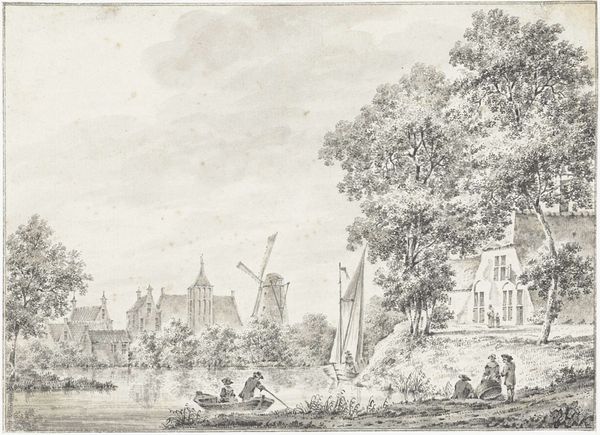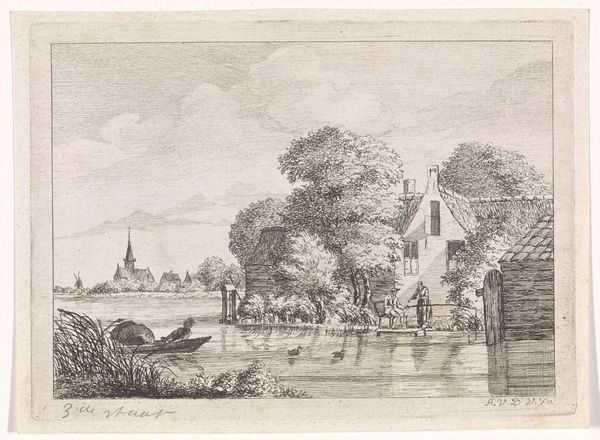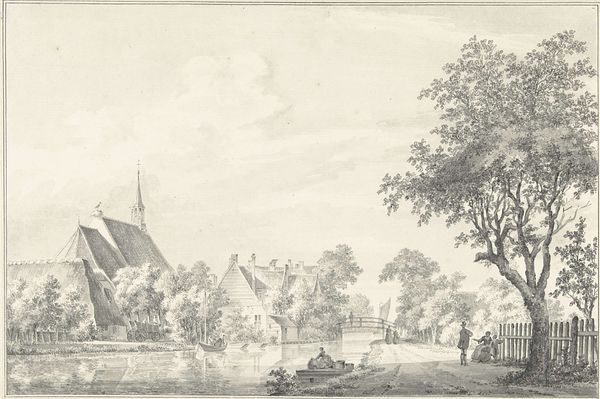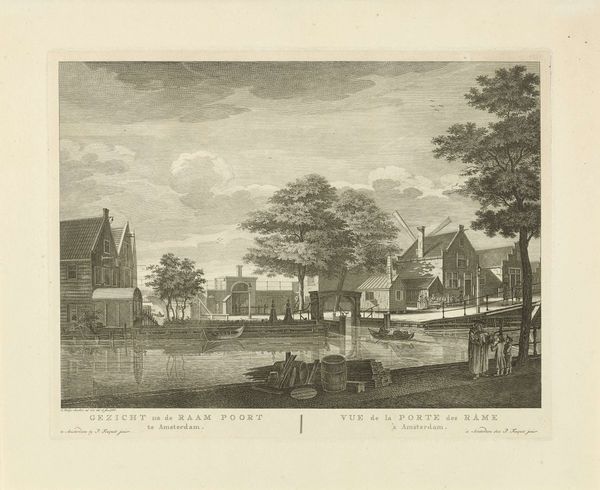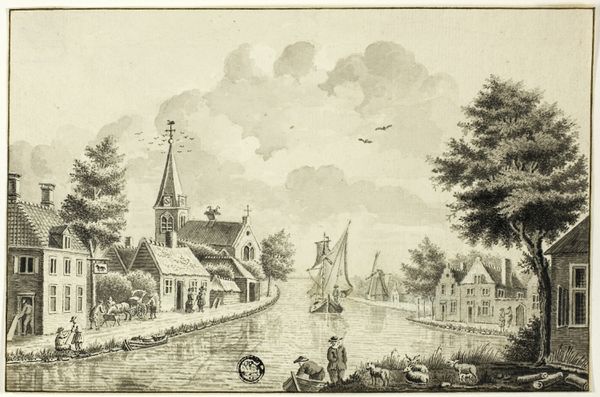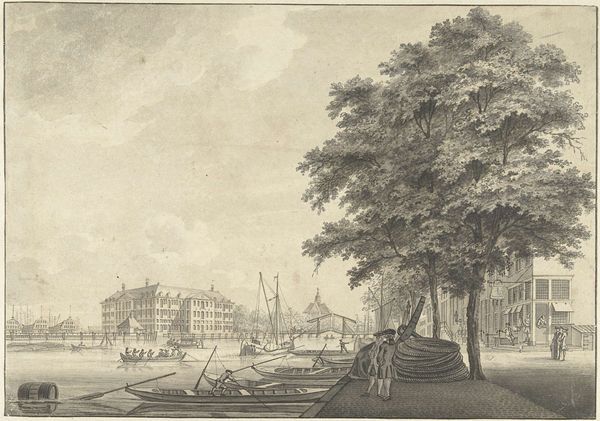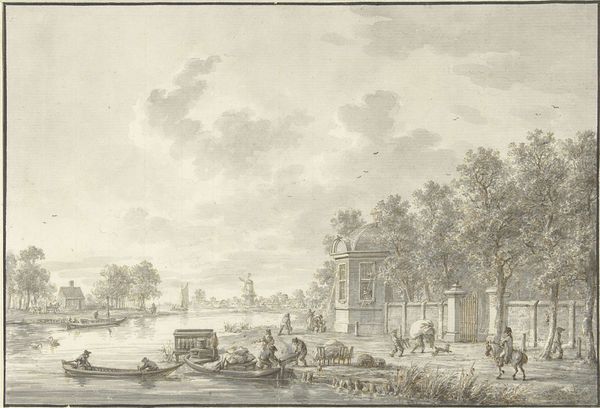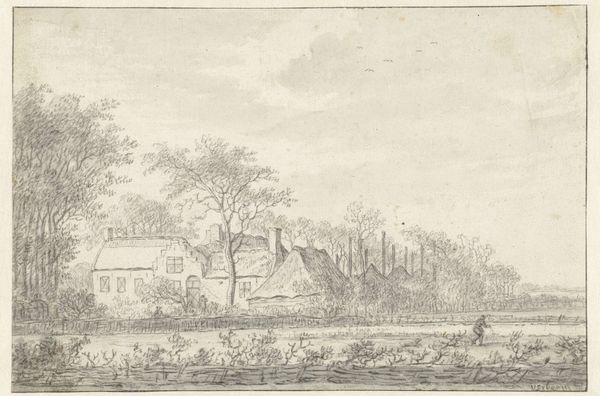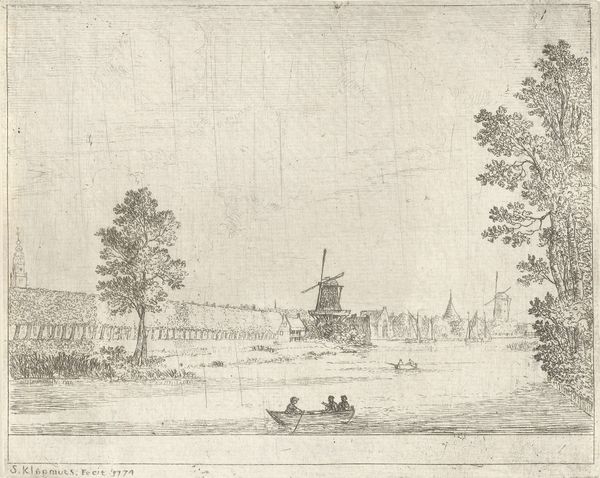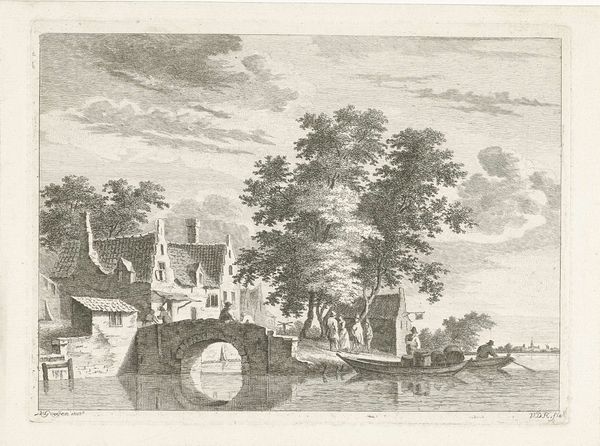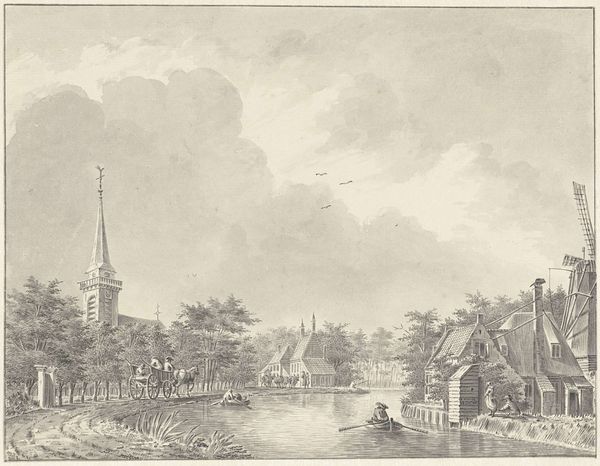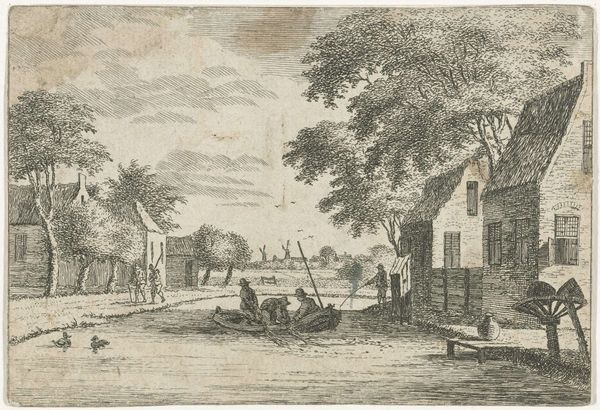
Dimensions: height 222 mm, width 215 mm
Copyright: Rijks Museum: Open Domain
Editor: This is "De Lutherse kerk te Alkmaar" by Isaac Ouwater, made sometime between 1758 and 1793. It's a drawing, almost photographic in its detail. What do you make of it? Curator: Well, considering Ouwater's meticulous approach to depicting Alkmaar's architecture, I'm drawn to the labour inherent in creating such a detailed cityscape. Note the etching technique; how it meticulously recreates the texture of brick and tile. Editor: You’re thinking about the labour that went into creating the drawing? Curator: Exactly. How does the act of creating such a precise image reflect the societal value placed on craftsmanship and documentation in 18th-century Netherlands? Furthermore, we must consider how the consumption of such imagery fed into a growing sense of civic pride. Editor: So you're not really focusing on the religious aspects of the building itself, but rather the production of the image as a commodity? Curator: Precisely. Think about who commissioned or purchased such an image. Was it the church itself, looking to advertise or legitimize itself? Or wealthy citizens celebrating their town? The image itself becomes a form of capital. Look at the regularity in the bricks, how this reflects standardized production in a time of increasing urbanization. What labor went into constructing that Lutheran church and who benefited from it? Editor: It's fascinating to think of it in terms of materials and social forces. Thanks, that’s a completely different way to view art than I usually do. Curator: Understanding art is like peeling back layers of history. Examining materials and methods opens doors to richer meanings.
Comments
No comments
Be the first to comment and join the conversation on the ultimate creative platform.
